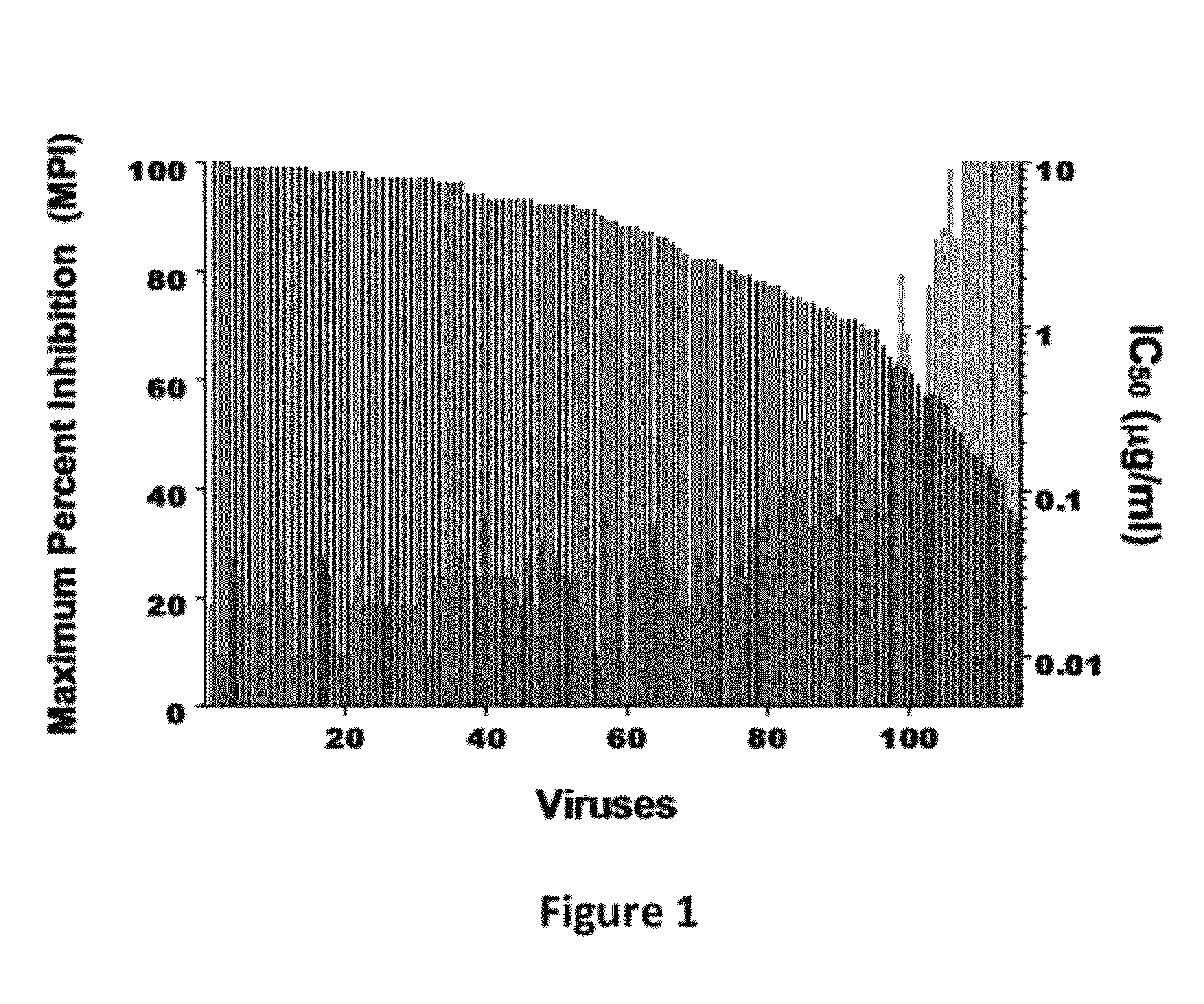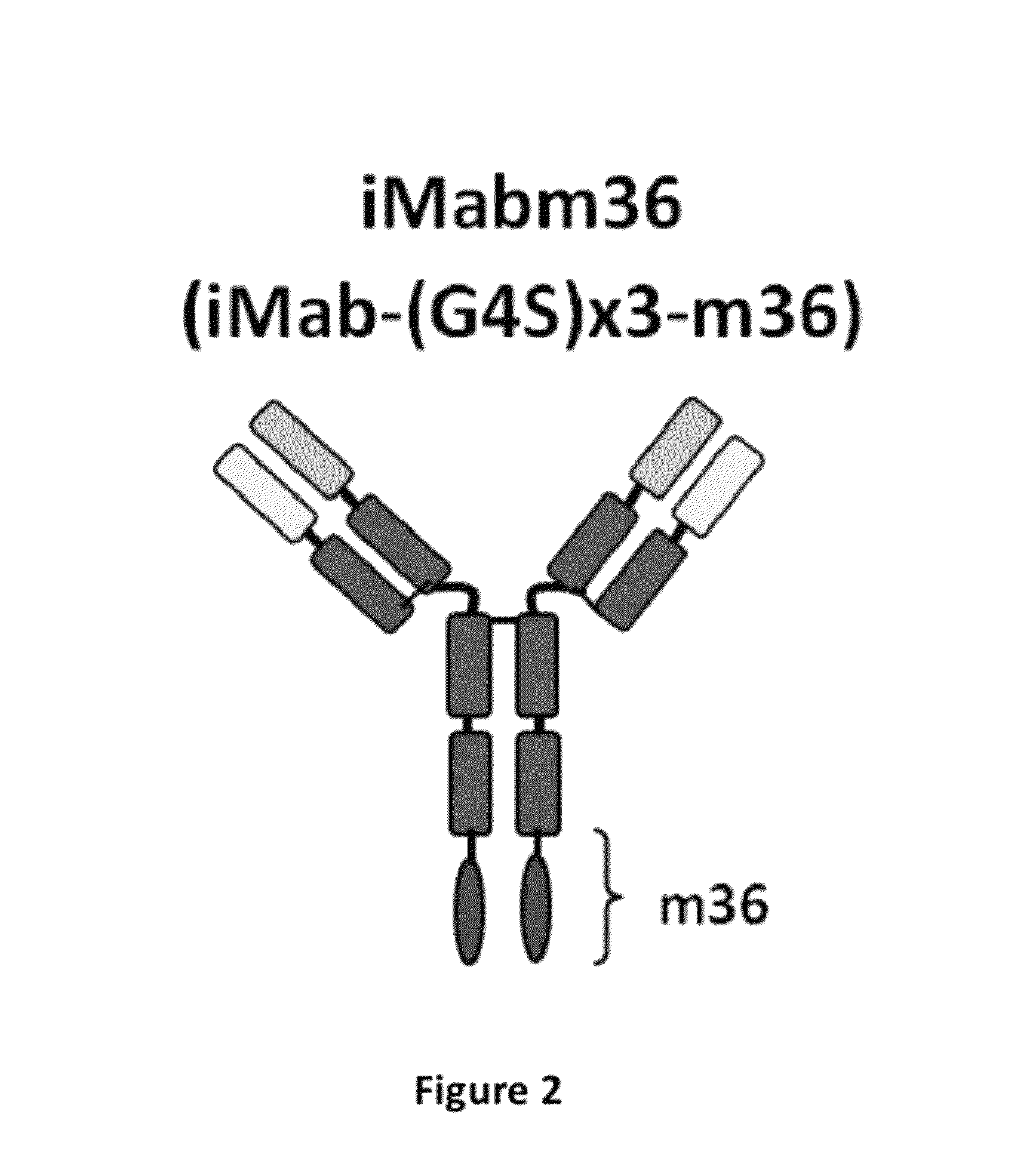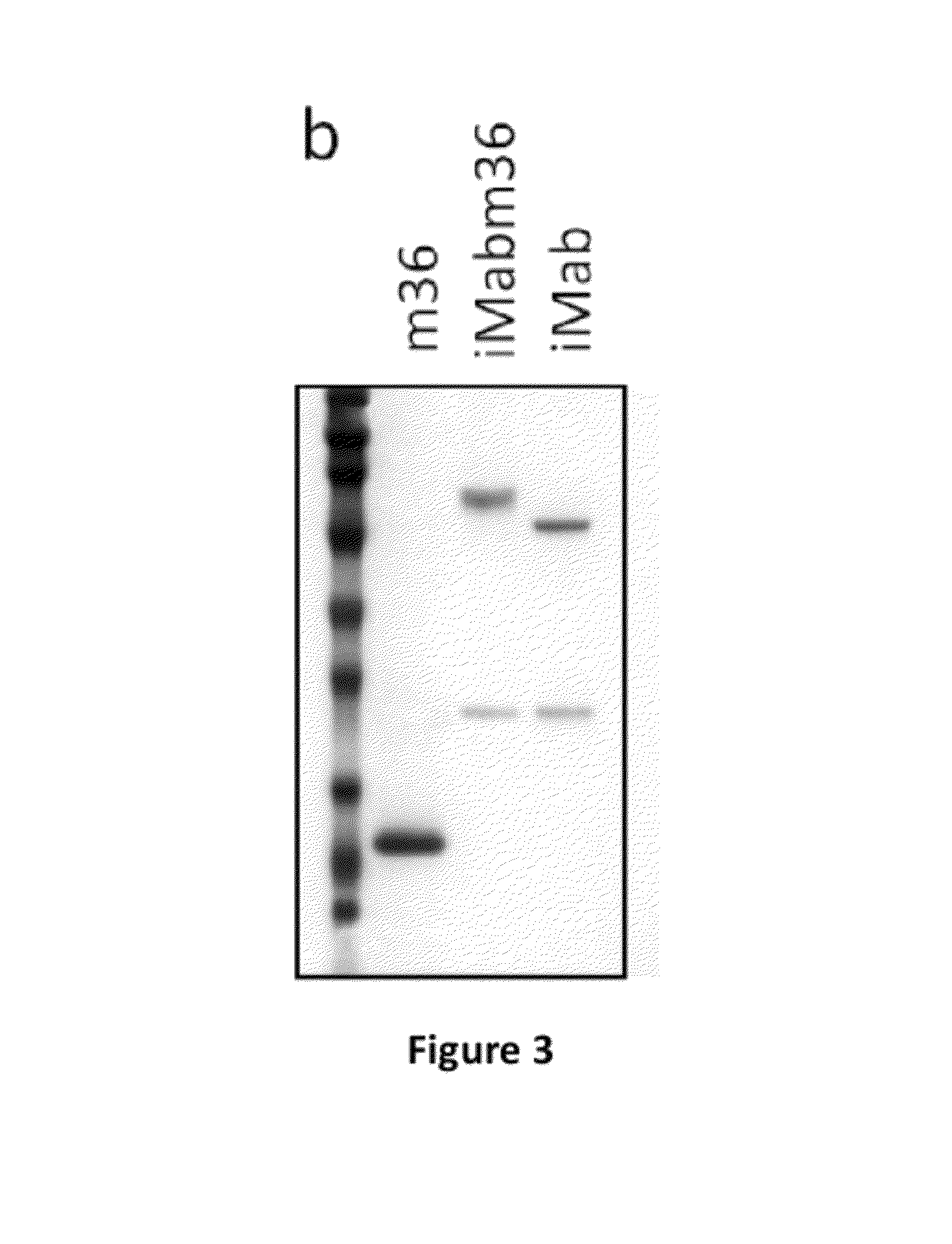Fusion antibodies for HIV therapy
a technology of hiv therapy and fusion antibodies, which is applied in the field of proteins, can solve the problems of sterically restricted access of full-size abs to the cd4i epitope (bridging sheet), and achieve the effect of improving potency and breadth against hiv and high barrier against viral resistan
- Summary
- Abstract
- Description
- Claims
- Application Information
AI Technical Summary
Benefits of technology
Problems solved by technology
Method used
Image
Examples
example-1
Construction and Testing of iMabm36
[0100]This Example describes the construction and testing of a novel bispecific HIV-1 neutralizing antibody (Ab) for the prevention and treatment of HIV / AIDS which was named iMabm36. iMabm36 is composed of the anti-CD4 Ab ibalizumab (iMab) linked to two copies of the anti-CD4-induced Ab m36. iMabm36 is shown herein to have significantly increased antiviral potency and breadth over iMab and m36 alone. In particular, it can potently inhibit viral entry of all iMab-resistant viruses tested. Mechanistically, it is shown therein that iMabm36 activity requires CD4 binding and is m36 sensitivity dependent. The inter-dependency of this dual mechanism of action enables the high potency and breadth of iMabm36. As almost all HIV-1 isolates use CD4 as a primary entry receptor and the m36 targeting site is highly conserved across all HIV-1 isolates, targeting these two sites is believed to provide a high barrier against viral resistance. iMabm36 has been shown ...
example-2
Construction and Testing of Ibalizumab-PG9
[0112]This Example describes the construction and testing of Ibalizumab-PG9 (or also referred to as “PG9-Ibalizumab”), a novel bispecific HIV-1 neutralizing antibody (NAb) for the prevention and treatment of HIV / AIDS. Ibalizumab-PG9 was created as a fusion of the anti-CD4 Ab ibalizumab fused to a single-chain Fv (scFv) version of the anti-HIV envelope NAb, PG9. Ibalizumab-PG9 showed significantly increased antiviral potency and breadth over ibalizumab or PG9 alone. In particular, it potently inhibited viral entry of all ibalizumab-resistant viruses tested. Since ibalizumab and PG9 inhibit HIV entry using two distinct mechanisms, the chance of emerging HIV resistance to the ibalizumab-PG9 fusion is diminished in comparison to either ibalizumab or PG9 alone.
[0113]Construction and expression of the ibalizumab-PG9 fusion antibodies. To improve ibalizumab's breadth and potency, bispecific ibalizumab-PG9 was created to simultaneously target both t...
example-3
Construction and Testing of Ibalizumab-VRC01
[0116]This Example describes the generation and testing of Ibalizumab-VRC01 (also referred to as “VRC01-Ibalizumab”), a novel bispecific HIV-1 neutralizing antibody (NAb) for the prevention and treatment of HIV / AIDS. Ibalizumab-VRC01 was created as a fusion of a single-chain Fv (scFv) version of the anti-HIV envelope NAb, VRC01, fused to the anti-CD4 Ab ibalizumab. Ibalizumab-VRC01 demonstrated significantly increased antiviral breadth over ibalizumab or VRC01 alone. In particular, it potently inhibited viral entry of all ibalizumab-resistant viruses tested. In addition, complementary resistance to ibalizumab and VRC01 occur via a mutually exclusive genotype. The dominant pathway to ibalizumab resistance involves abrogation of potential N-linked glycosylation (PNG) of the V5 N-terminus. It has been previously demonstrated from a large panel of viruses and from site-directed mutants that the presence of a V5 N-terminal PNG site is sufficien...
PUM
| Property | Measurement | Unit |
|---|---|---|
| concentration | aaaaa | aaaaa |
| concentration | aaaaa | aaaaa |
| concentration | aaaaa | aaaaa |
Abstract
Description
Claims
Application Information
 Login to View More
Login to View More - R&D
- Intellectual Property
- Life Sciences
- Materials
- Tech Scout
- Unparalleled Data Quality
- Higher Quality Content
- 60% Fewer Hallucinations
Browse by: Latest US Patents, China's latest patents, Technical Efficacy Thesaurus, Application Domain, Technology Topic, Popular Technical Reports.
© 2025 PatSnap. All rights reserved.Legal|Privacy policy|Modern Slavery Act Transparency Statement|Sitemap|About US| Contact US: help@patsnap.com



